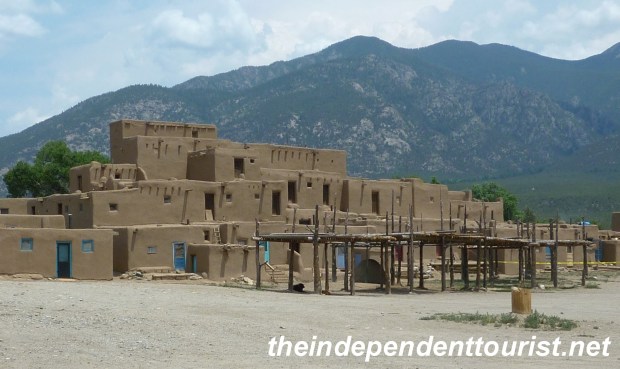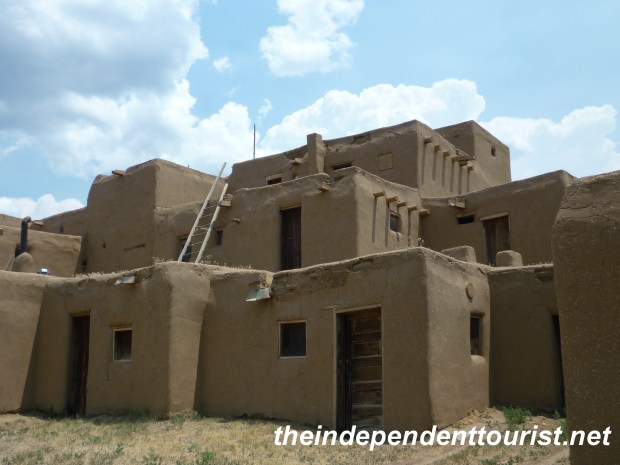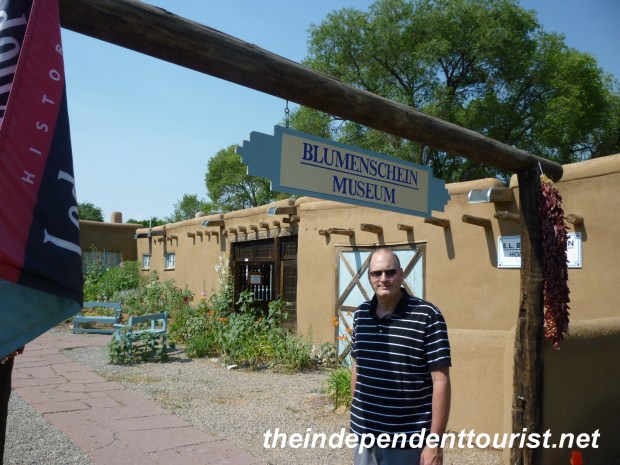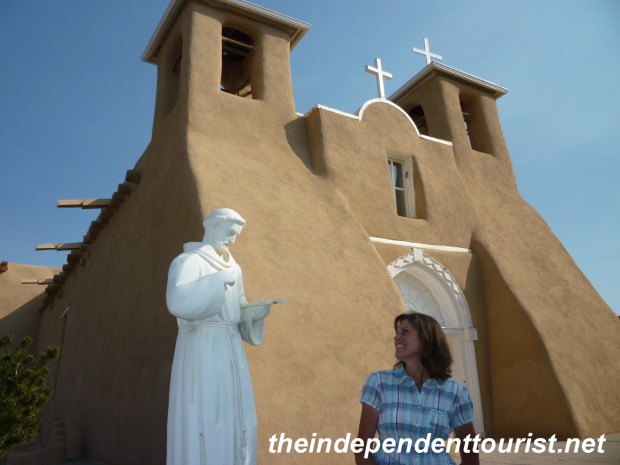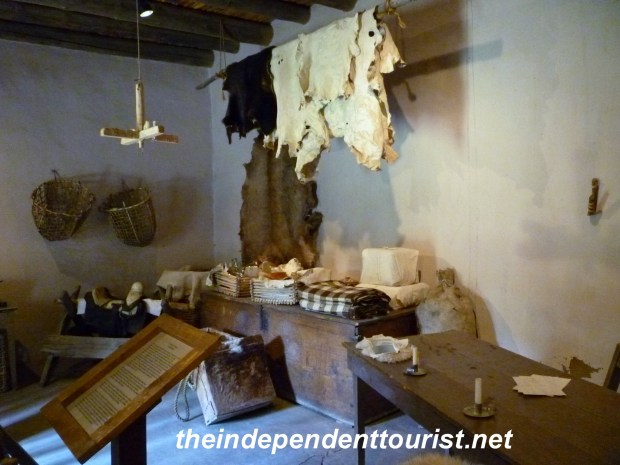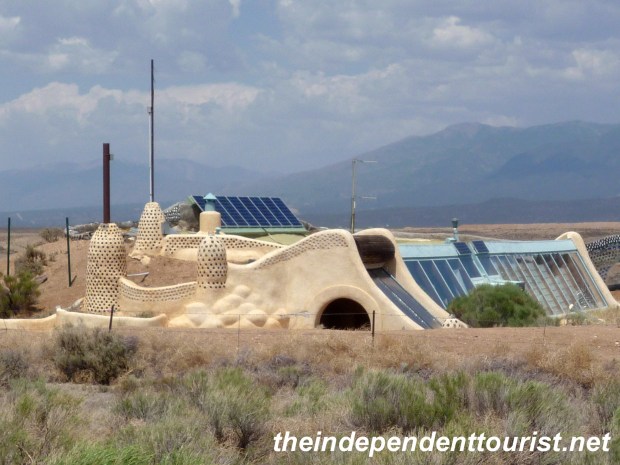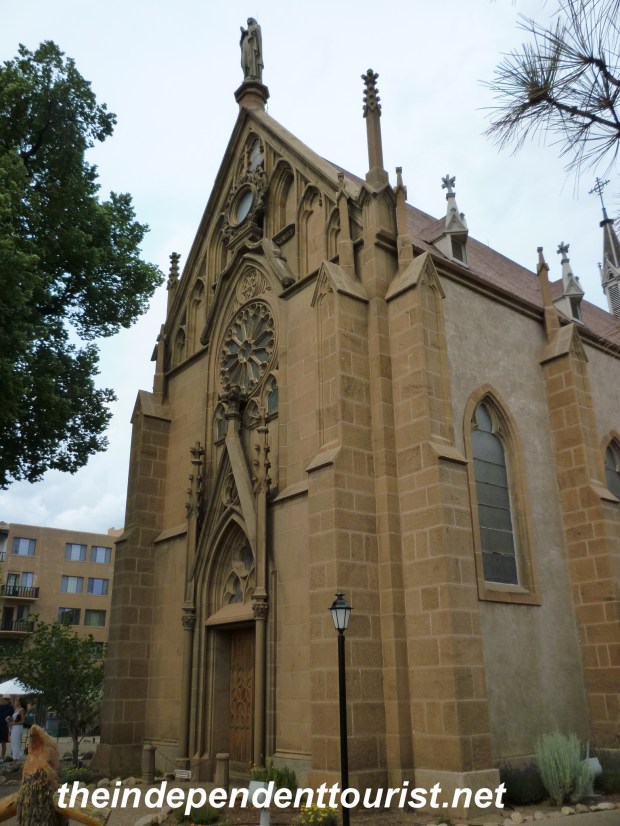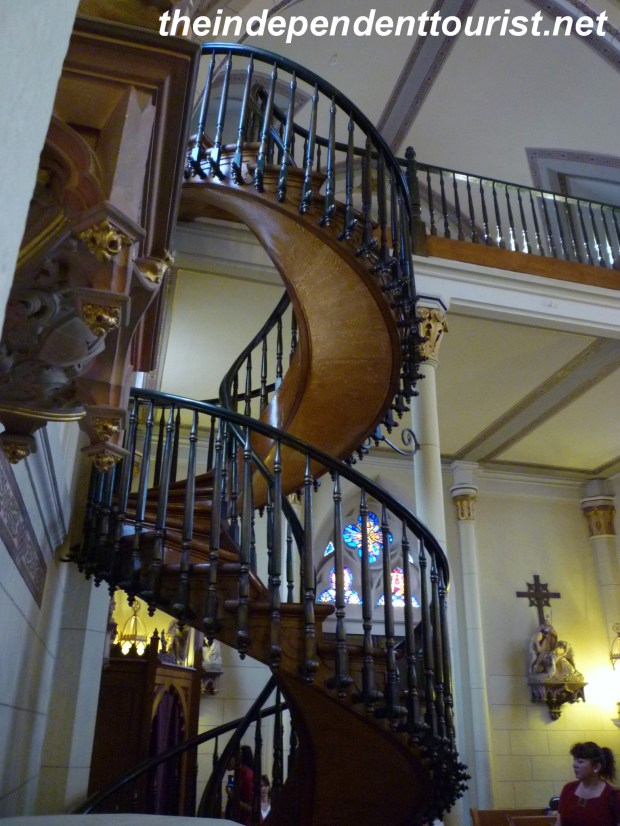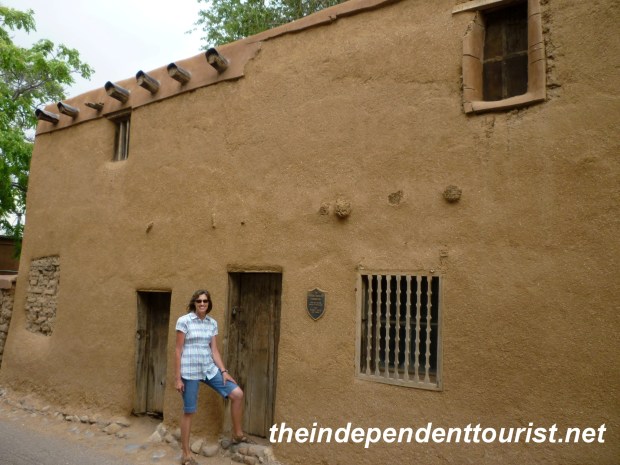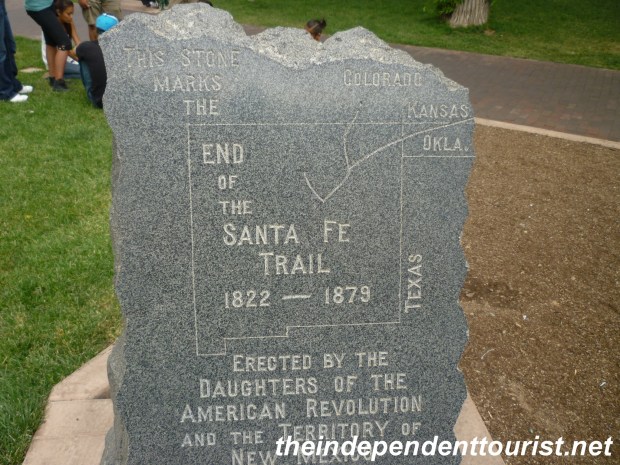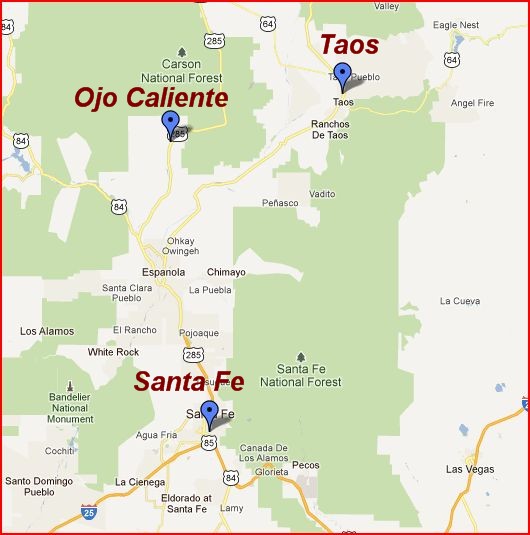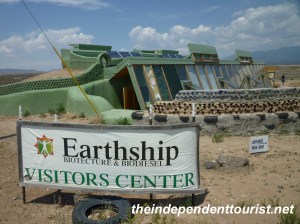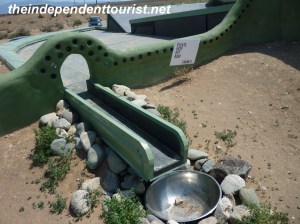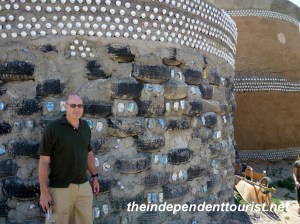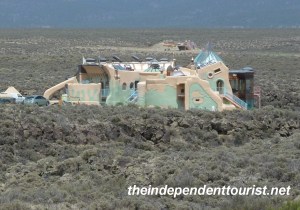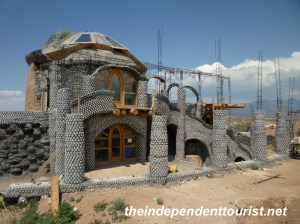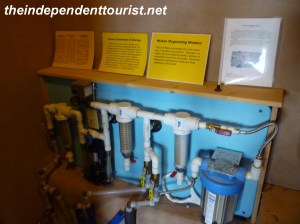For a fun getaway consider Taos, New Mexico. In summer of 2011 we finally visited “The Land of Enchantment.” We’ve lived in Colorado for 20 years, and have talked about visiting this little artsy village almost every year and finally did it! We spent a 3 day weekend headquartered in Taos and visited a number of sights in the surrounding area. At the time of our visit, the huge forest fires near Los Alamos were still raging, but winding down. Still, there was a fair amount of smoke in the air, but luckily it didn’t really affect our trip.
Taos is nestled against the Sangre de Cristo Mountains. The flags of Spain, Mexico and the U.S. have flown over Taos. It and Santa Fe are known for their unique architecture. Most of the historical construction is adobe, which is basically mud bricks made with straw for more strength. The adobe has to be resurfaced regularly (like yearly) to keep it intact. It is a high maintenance building material, but provides an interesting “southwestern” look to local buildings.
Here are seven things to keep you busy in the Taos area:
1. Taos Pueblo. Just three miles northwest of Taos is the Taos Pueblo, home of the Taos Pueblo Native Americans, and signature landmark of Taos. This is a living historical monument, with people living here as they have for perhaps 900 years (although I understand only about 25 live here full time). The homes are authentic—no running water or electricity. The water source is the Red Willow Creek which runs through the middle of the Pueblo. Bread is baked in outdoor adobe ovens. One cannot go into the homes without being invited, but it is possible to get a feel for the inside of the dwellings through the small shops located around the Pueblo. The entrance fee to the Pueblo is about $15/person with taxes plus a camera fee of $6.
2. Ledoux Street. Named after a French trapper, this street had gates at each end in the 1800’s. Nowadays, this little street contains many art galleries. Taos is known for its artists, and this street has some wonderful examples. Don’t miss two museums on this street: Blumenschein Home and Museum, named after one of the founders of the Taos Society of Artists and Harwood Museum, which includes 2000 works of art and 17, 000 images from the 19th century to the present.
3. San Francisco de Asis Church. At the eastern end of Taos, is the Church of San Francisco, one of the most picturesque adobe churches in the area. Right next to the church are some dilapidated old adobe buildings which provide insight into the construction methods used with the timber and adobe materials. The church is usually open by 10 am.
4. Hacienda de los Martinez. With my love of history, I found this Hacienda, also made of adobe, quite interesting. It is just two miles west of Taos and was built in 1804. It has 21 rooms around two courtyards, including living and working areas. A good brochure provided with your ticket explains the use and history of each room, giving the visitor a good feel for what life was like on a ranch in New Mexico in the 1800’s. The cost is $8/person.
5. Ojo Caliente Hot Springs and Spa. About 50 miles southeast of Taos is Ojo Caliente Hot Springs, which contains 7 mineral pools, including private hot pools which can be rented. It is a small modern resort that is in the middle of the New Mexico desert. Accommodations include cottages, hotel rooms, and a RV park. In addition to the spa and springs, hiking and bike trails add to the list of things to do. If you’re looking for solitude and relaxation, this is a quiet little spot with nice services. The entrance fee for 1 day was $30/person. Visit Ojospa.com for more information.
6. Earthship Biotecture. I wrote a separate post on our visit to Earthship country, just outside Taos amongst the sagebrush. Homes here are made of old discarded materials, such as tires, bottles, and cans which minimize the impact to the environment. There is a visitor’s center (open 7 days a week) providing information and a feel for the distinctive architecture and sustainable lifestyle.
7. Visit Santa Fe. If we were to do our visit over again, we would stay in Santa Fe, since it has more accommodation and dining options, and visit Taos from Santa Fe. Santa Fe is a beautiful town, with lots of history also, as the end point of the famous Santa Fe Trail. We visited the historical part of town on one of our days. It’s about a 75 minute drive to Santa Fe from Taos.
One of the most interesting things in Santa Fe is the Gothic Loretto Chapel, built in 1873, open daily, and located in the heart of the historical district. This church contains a spiral wooden stair case that contains no center or side support! Even now, construction engineers don’t quite know how this staircase holds itself up. The entry fee is $3.
